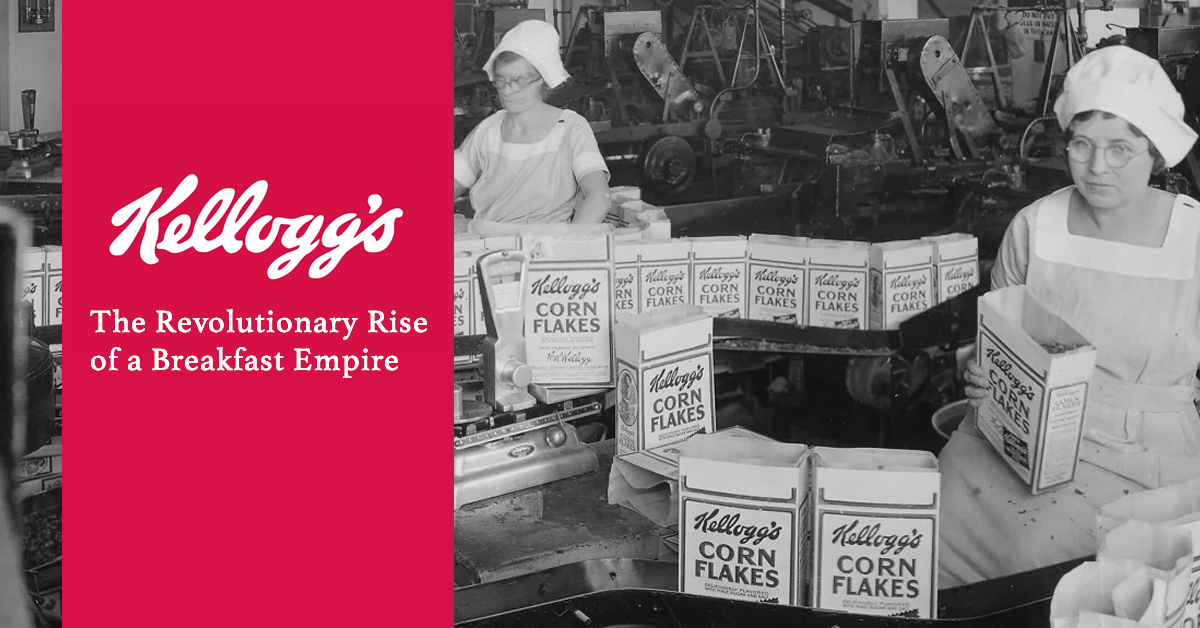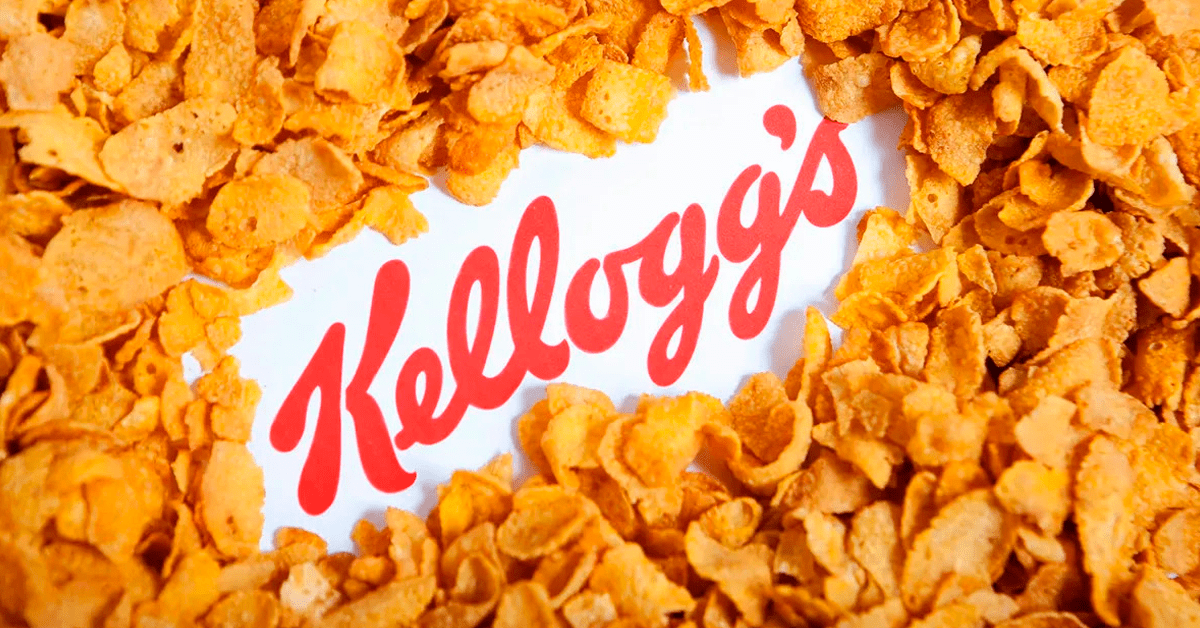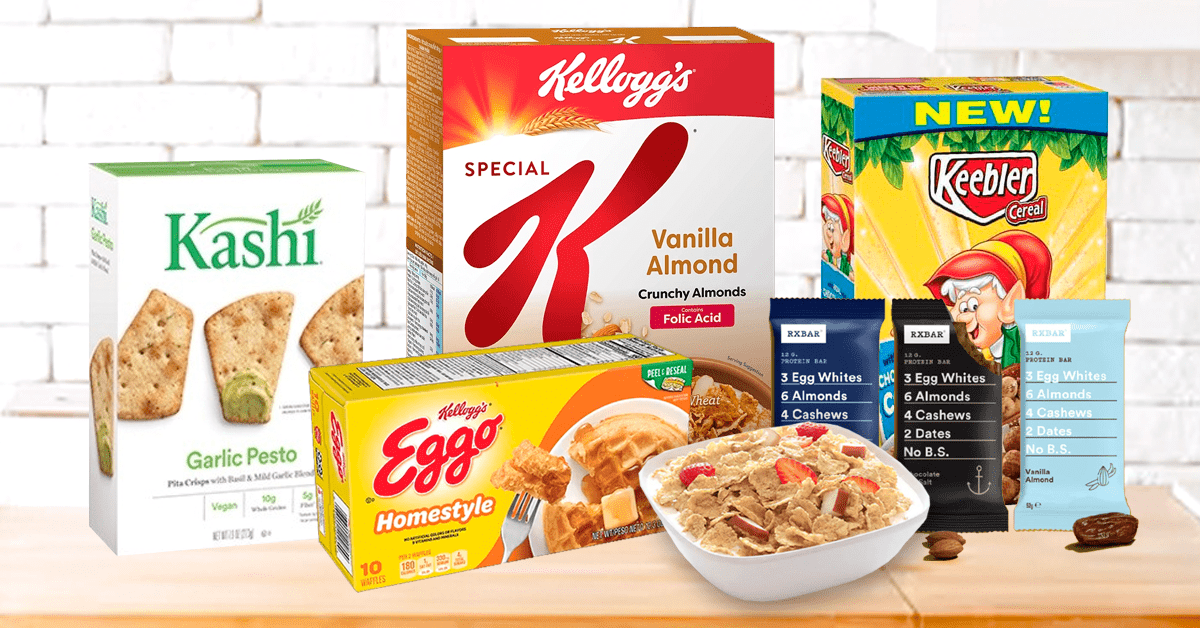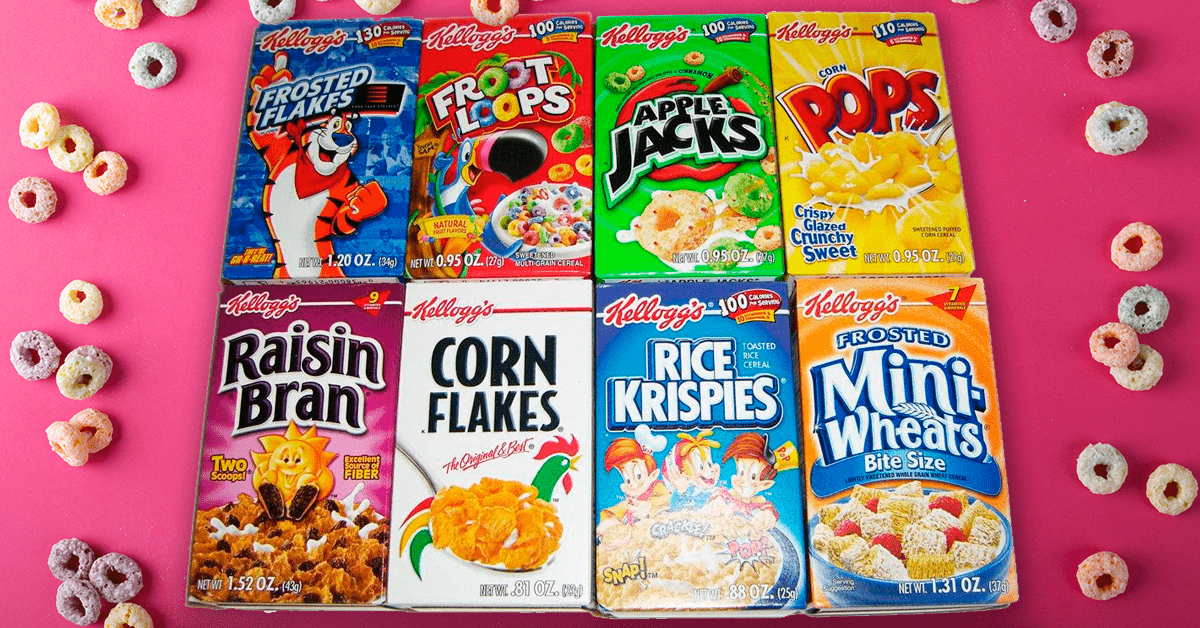
The Kellogg Brothers' Discovery
The origins and history of Kellogg’s, a brand synonymous with breakfast cereals, began in the late 19th century in Battle Creek, Michigan. Here, Dr. John Harvey Kellogg and his brother, Will Keith Kellogg, made an accidental yet groundbreaking discovery. Running the Battle Creek Sanitarium, Dr. Kellogg was experimenting with healthy foods for his patients when the pair stumbled upon what would become the cornerstone of the modern breakfast cereal: flakes.

W.K. Kellogg's Vision
Will Keith Kellogg, unlike his brother Dr. John Harvey Kellogg, was not just focused on the nutritional aspect of their cereal discovery. He possessed a remarkable foresight and entrepreneurial spirit that saw the potential of this simple flaked cereal to revolutionise not only the way people ate breakfast but also how food products could be marketed and sold on a massive scale.
At the turn of the 20th century, breakfast in America was a far cry from the light, simple meals we know today. It typically consisted of heavy, often greasy fare that was time-consuming to prepare and hard on the digestive system. W.K. Kellogg’s introduction of Corn Flakes in 1898 was groundbreaking. Here was a food that was not only nutritious and easy to digest but also convenient and quick to prepare. This aligned perfectly with the increasingly fast-paced lifestyle of the American public.
However, Kellogg knew that a good product alone was not enough to guarantee success. He had to convince people to try it and then make it a staple in their homes. To do this, he embarked on what were, at the time, revolutionary marketing strategies. He was one of the first to use mass media advertising to reach a broad audience. His early campaigns in newspapers and billboards were catchy and memorable, emphasising the health benefits and ease of preparation of Corn Flakes.
Another key aspect of W.K. Kellogg’s vision was his commitment to brand recognition. He famously put his signature on every package of Kellogg’s Corn Flakes, personally vouching for the quality of the product. This was not just a marketing tactic; it was a promise of quality and reliability to his customers. This practice helped build a lasting trust between the company and its consumers, a trust that would be vital as the company grew and faced competition.
Kellogg’s understanding of the importance of product identity led him to innovate in packaging and design. He introduced bright, attractive packaging that stood out on store shelves, further distinguishing Kellogg’s products from competitors. This emphasis on branding extended to the product itself; for instance, the distinctive shape of Corn Flakes became synonymous with the Kellogg’s name.
Another groundbreaking strategy was his use of product giveaways and promotions. These early forms of what we now know as sales promotions included giving away free samples, which helped to introduce consumers to the product and encourage repeat purchases.
W.K. Kellogg’s business acumen was evident in his expansion strategies. He understood the importance of scaling up production to meet growing demand while maintaining product quality. He also saw the value in diversification and, over time, expanded the company’s product line to include a variety of cereals and other breakfast foods.
W.K. Kellogg’s vision transcended the mere production of a new food item. He fundamentally transformed breakfast from a heavy, laborious meal into a light, nutritious, and convenient one. More importantly, he pioneered marketing and branding strategies that not only established Kellogg’s as a household name but also set a standard for product promotion and brand management that companies worldwide still follow today. His legacy is not just in the cereals we eat but in how businesses approach marketing, branding, and consumer engagement.

From Corn Flakes to a Global Phenomenon
Kellogg’s journey from a simple corn flake brand to a global phenomenon is a story of continuous innovation and adaptability in a changing world. The brand evolution of Kellogg’s is marked by its ability to not only create but also anticipate consumer needs and trends, thus transforming breakfast culture worldwide.
Initially, the success of Corn Flakes was monumental, but Kellogg’s didn’t rest on its laurels. The company recognized the potential for growth and diversity in the cereal market. This led to the introduction of new cereals, each aimed at capturing different tastes and preferences.
Rice Krispies, introduced in the 1930s, was a prime example of this innovation. Its unique selling point was the audible “snap, crackle, and pop,” which created a new breakfast experience. This clever marketing of a sensory experience, rather than just the product, showcased Kellogg’s understanding of consumer engagement.
Another significant aspect of Kellogg’s brand evolution was its early recognition of the importance of child-focused marketing. The introduction of cereals like Frosted Flakes, with Tony the Tiger as its mascot, was a strategic move that tapped into the children’s market. Mascots like Tony the Tiger didn’t just promote the cereal; they became cultural icons, creating a lasting connection between consumers and the Kellogg’s brand. This focus on children also extended to comic strips, games, and toys in cereal boxes, which were innovative ways to engage young consumers.
Kellogg’s also understood the power of television advertising early on. As TV sets became commonplace in homes, Kellogg’s was one of the first companies to use this medium for marketing. The TV commercials were not just about showcasing the product but were designed to entertain and create memorable jingles and slogans that resonated with the audience.
As Kellogg’s expanded globally, it adapted its products to suit different cultural tastes and dietary preferences. This global expansion was strategic and considerate; they didn’t just export their American products but created new ones that reflected the local flavours and dietary habits of the regions they entered. This approach helped Kellogg’s become a global brand, with its cereals enjoyed in households around the world.
The latter part of the 20th century saw a shift in consumer health consciousness, and Kellogg’s responded by diversifying its health-focused cereals. They introduced bran and whole-grain cereals and started fortifying cereals with vitamins and minerals. This not only catered to the health-conscious market but also positioned Kellogg’s as a brand that cared about its consumers’ well-being.
In the digital age, Kellogg’s continued to evolve with changing marketing dynamics. The brand embraced social media, interactive marketing, and digital campaigns. They leveraged these platforms for product promotions, consumer engagement, and to create a community around their brand.
Kellogg’s brand evolution is a testament to its ability to innovate continuously, adapt to changing consumer needs and preferences, and stay relevant in a competitive market. From a single product, Corn Flakes, Kellogg’s grew into a diverse range of breakfast options enjoyed worldwide, becoming a household name and a symbol of innovation in food and marketing.

The Brand Spectrum of Kellogg's
In addition to its iconic cereals, Kellogg’s portfolio encompasses a diverse array of brands, each catering to different segments of the food market and reflecting the company’s expansion beyond the breakfast cereal aisle. These brands highlight Kellogg’s strategic growth and its ability to diversify while maintaining its core values of quality and innovation.
One of the key acquisitions in Kellogg’s expansion was Keebler, a major cookie and cracker manufacturer known for its popular elves marketing campaign. This acquisition broadened Kellogg’s reach into the snack industry, offering a range of cookies, crackers, and savory snacks. Pringles, another significant addition, marked Kellogg’s foray into the potato chip market, diversifying its snack offerings with a globally recognized brand.
Kellogg’s also owns Eggo, famous for its frozen waffles and pancakes, which have become a staple in American breakfast culture. This acquisition aligned well with Kellogg’s breakfast-oriented portfolio, offering convenient, ready-to-eat breakfast options. MorningStar
Farms is another notable brand under Kellogg’s, catering to the growing demand for vegetarian and plant-based food options. This brand is particularly significant as it underscores Kellogg’s commitment to health-conscious consumers and those with specific dietary preferences.
In the health-focused segment, Kellogg’s owns Kashi, a brand specialising in whole grain cereals, snacks, and frozen foods. Kashi products are known for their natural ingredients and appeal to health-conscious consumers seeking nutritious options. Special K, another well-known Kellogg’s brand, targets health and weight-conscious consumers with a range of cereals, bars, and shakes designed for a balanced diet.
Kellogg’s also extends its reach into convenient foods with brands like RXBAR, a protein bar company that emphasises simple, whole ingredients, and Bear Naked, a producer of granola and snack bars. These brands reflect Kellogg’s response to the growing demand for healthy, on-the-go snack options.
The diversity of Kellogg’s brand portfolio illustrates the company’s strategic growth from a cereal company to a global food conglomerate. Each brand under the Kellogg’s umbrella contributes to its overarching vision of providing a variety of food products that cater to different tastes, dietary needs, and eating occasions. This expansion into different food categories not only solidifies Kellogg’s position in the global food market but also showcases its adaptability and responsiveness to changing consumer trends and preferences.

Innovation and Expansion
As Kellogg’s entered the 20th century, the company didn’t just rest on its laurels but instead embarked on a journey of continuous innovation and expansion. This period was marked by a series of strategic moves that not only broadened Kellogg’s product range but also its global footprint, adapting to the changing times with remarkable agility.
One of the key strategies of Kellogg’s during this era was product diversification. The company expanded beyond its original Corn Flakes, introducing a variety of new cereals that catered to different tastes and nutritional needs. This included the introduction of Rice Krispies in the 1930s, which became famous for their unique “snap, crackle, and pop” sound. This diversification was not just a way to capture more market share but also a response to the evolving dietary preferences and health consciousness of consumers.
Kellogg’s also pioneered the fortification of cereals with vitamins and minerals, a response to the growing awareness of nutritional deficiencies in the average American diet. This move not only enhanced the health value of their products but also positioned Kellogg’s as a brand that cared about the wellbeing of its consumers.
Global expansion was another hallmark of Kellogg’s strategy in the 20th century. The company realised early on that there was significant demand for its products beyond the United States. Thus, it began setting up manufacturing plants in different countries, adapting its products to suit local tastes and preferences. This global expansion helped Kellogg’s build a strong international presence, making it a household name around the world.
Innovation at Kellogg’s was not limited to product development and global expansion. The company also pioneered new manufacturing processes and technologies to improve the quality and efficiency of cereal production. This included advancements in food processing and preservation, ensuring that Kellogg’s products remained fresh and tasty for longer periods.
As the digital age dawned, Kellogg’s embraced the new era with a strategic shift towards digital marketing and online presence. Recognizing the growing influence of the internet and social media on consumer behaviour, Kellogg’s invested in developing a robust digital presence. This involved not just a functional and engaging website but also a strong presence on various social media platforms. Through these channels, Kellogg’s engaged with consumers directly, offering nutritional advice, recipes, and interactive content, further strengthening its brand connection with customers.
Digital marketing campaigns became an integral part of Kellogg’s strategy. The company utilised a mix of content marketing, search engine optimization, and social media advertising to reach a broader audience. These efforts were particularly effective in targeting younger demographics, who spend a significant amount of time online.
Kellogg’s also leveraged data analytics and consumer insights gathered from its digital platforms to inform its marketing strategies and product development. This data-driven approach allowed Kellogg’s to understand consumer preferences better and respond with more targeted and effective marketing campaigns.
Kellogg’s journey through the 20th century and into the digital age is a testament to its ability to innovate and adapt. Through product diversification, global expansion, technological advancements in manufacturing, and embracing digital marketing, Kellogg’s has not only sustained its market leadership but has also remained relevant and influential in an ever-changing business landscape. The company’s ability to anticipate and respond to consumer trends, both in terms of product offerings and marketing strategies, has been crucial in its enduring success.

Kellogg's in the age of Digital Marketing Breakfast
As the digital landscape evolved, Kellogg’s adeptly transitioned into the new era, recognizing the immense potential of social media, digital presence, and e-commerce in shaping consumer preferences and driving business growth. This strategic pivot has been pivotal in keeping the brand relevant and engaged with modern consumers.
Social Media Strategy
Kellogg’s social media strategy stands out for its dynamic and consumer-centric approach. The company has leveraged platforms like Facebook, Instagram, Twitter, and YouTube not just to market its products but to create a community around its brand. Through these channels, Kellogg’s offers a blend of content that includes health tips, recipes, interactive games, and behind-the-scenes glimpses into the company. This content is tailored to be engaging and shareable, thus broadening its reach and impact.
A key aspect of Kellogg’s social media strategy is its focus on storytelling. By sharing stories that resonate with their audience – from highlighting their commitment to sustainability to celebrating individual achievements with their products – Kellogg’s fosters a deeper emotional connection with consumers. Additionally, Kellogg’s has successfully utilised influencer partnerships and user-generated content to amplify its brand presence and credibility.
Digital Presence and Engagement
Kellogg’s digital presence extends beyond social media. Their website and mobile applications are designed to provide an immersive brand experience. These platforms are not only informational, offering product details and nutritional insights, but also interactive, featuring quizzes, games, and personalised recommendations. This approach helps Kellogg’s maintain an engaging dialogue with consumers, keeping the brand top of mind.
Moreover, Kellogg’s has been innovative in using digital technologies to enhance customer engagement. For example, they have experimented with augmented reality and interactive packaging, offering consumers a unique and engaging experience that blends the physical and digital worlds.
E-Commerce and Online Retail
E-commerce has become a crucial component of Kellogg’s sales strategy. The company has skillfully adapted to the growing trend of online shopping, ensuring its products are readily available on various e-commerce platforms. Kellogg’s collaborates closely with online retailers like Amazon, Walmart, and specialty health food sites to optimise its product listings, ensuring visibility and convenience for consumers.
Additionally, Kellogg’s has developed strategies to drive online sales, such as offering exclusive online discounts, subscription services, and bundle packs. They also use data analytics to understand consumer buying patterns and preferences, which helps in creating targeted promotions and improving product assortment.
Kellogg’s exploration into direct-to-consumer (DTC) channels is another significant step. By selling directly through their own channels, Kellogg’s gains more control over the customer experience, gathers valuable first-party data, and builds a direct relationship with consumers.
In summary, Kellogg’s approach in the digital age is a multifaceted one, blending social media savvy, a strong digital footprint, and a keen understanding of e-commerce dynamics. This strategy not only reflects Kellogg’s adaptability to changing market trends but also highlights its commitment to staying connected with its consumers in a rapidly evolving digital world. Their efforts in this arena have not only helped maintain their market position but also allowed them to reach new audiences and adapt to the shifting landscape of consumer behaviour.
Embracing Change with WDD Malaysia
Today, Kellogg’s remains at the forefront of the food industry, with a renewed focus on nutrition, sustainability, and ethical production. The company has adapted to demands for reduced sugar, organic, and non-GMO products, while also addressing environmental concerns. Kellogg’s journey from a health sanitarium to a global food manufacturing giant epitomises the power of innovation, entrepreneurship, and adaptability in a constantly changing world.
If your business boasts a rich history akin to Kellogg’s and you’re ready to embrace the digital age with its myriad of benefits, it’s time to take the crucial step towards achieving your vision. Engage with WDD Malaysia, where your aspirations meet our expertise. At WDD Malaysia, we understand that the cornerstone of a successful digital transition is a bespoke website – one that is tailored to encapsulate the essence of your brand and engineered to cater to the evolving digital needs of your target audience.
Our team of skilled professionals is dedicated to guiding you through every phase of your digital journey, ensuring that your storied legacy is seamlessly integrated with cutting-edge digital strategies. Let us help you unlock the full potential of the digital world, beginning with a website that’s as unique and distinguished as your business’s history. Contact WDD Malaysia today, and together, let’s turn your vision into a digital reality.




